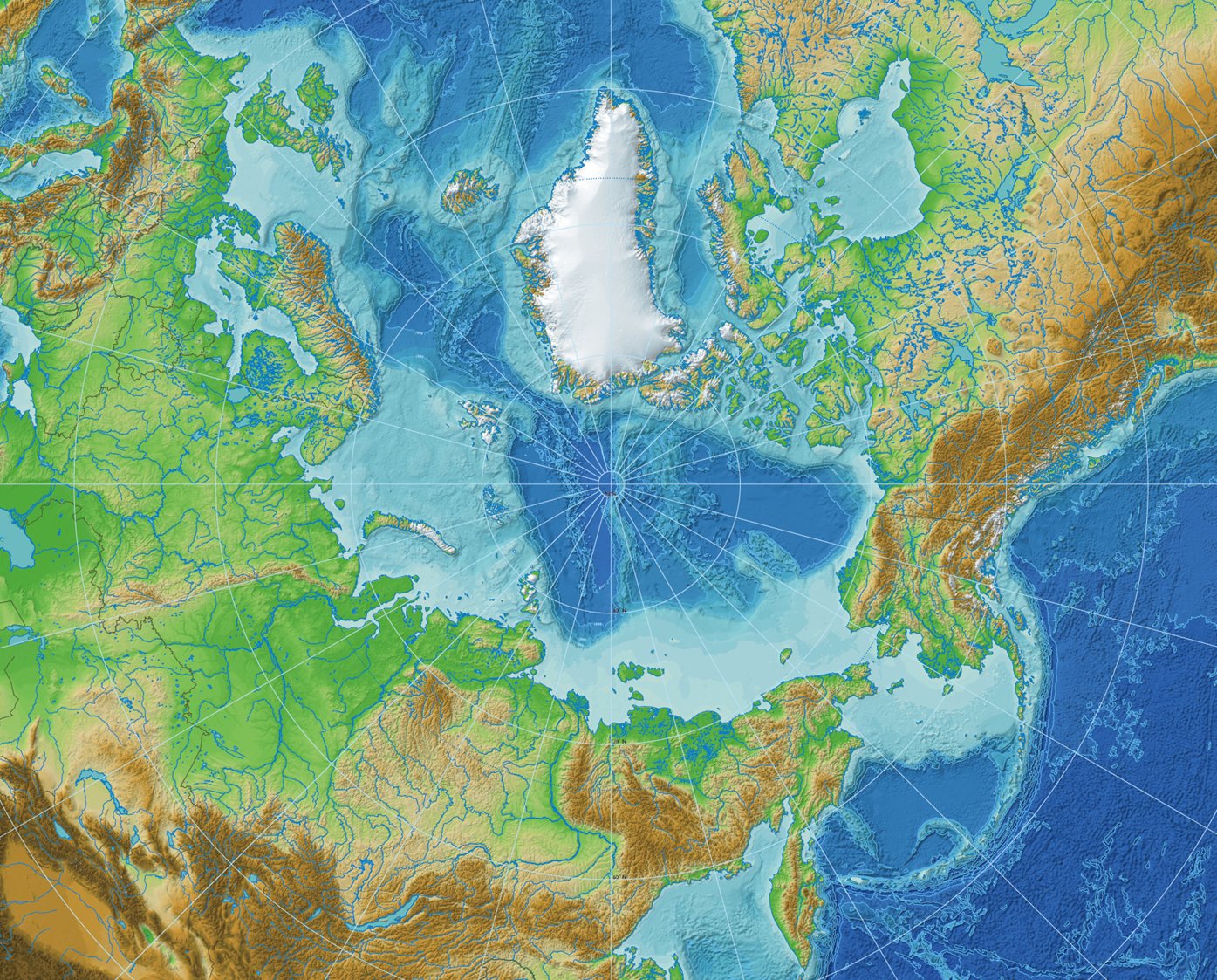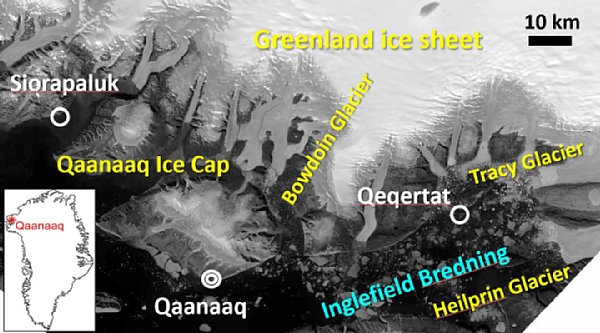

Study site: Qaanaaq region
Qaanaaq is a village in northwestern Greenland populated by
approximately 600 residents. In this region, snow and ice related
research activities have been carried out by Japanese researchers
since around 2000. The village is located on the coast of a peninsula,
which is covered by Qaanaaq Ice Cap except for its
coastline. Bordering the village is the entrance to Inglefield
Bredning, an approximately 100 km long and 20 km wide glacial fjord
system. Sea ice covers the fjord during winter until it breaks up in
spring, generally in July. Sea ice seasonality is crucial for the
local community because it enables people to use dog sledges and
snowmobiles. The timing of sea ice break-up is of great interest to
the residents because the first supply ship of the year can dock as
soon as the sea ice allows it. Because several marine-terminating
glaciers feed the fjord, icebergs are abundant near the village. They
are utilized as a freshwater resource in wintertime. Several smaller
settlements are found in the Qaanaaq region. Siorapaluk is situated
~50 km northwest from Qaanaaq on the coast of a glacial fjord
connected to Baffin Bay. A large colony of little auks is situated
near the settlement, where residents catch seabirds with a traditional
hand net. Qeqertat is a settlement situated ~60 km east of Qaanaaq in
the inner part of Inglefield Bredning. The area close to Qeqertat is a
key site for narwhal hunting during the summer and halibut fishing
during the winter. These settlements are populated by ~20-30 people
each.